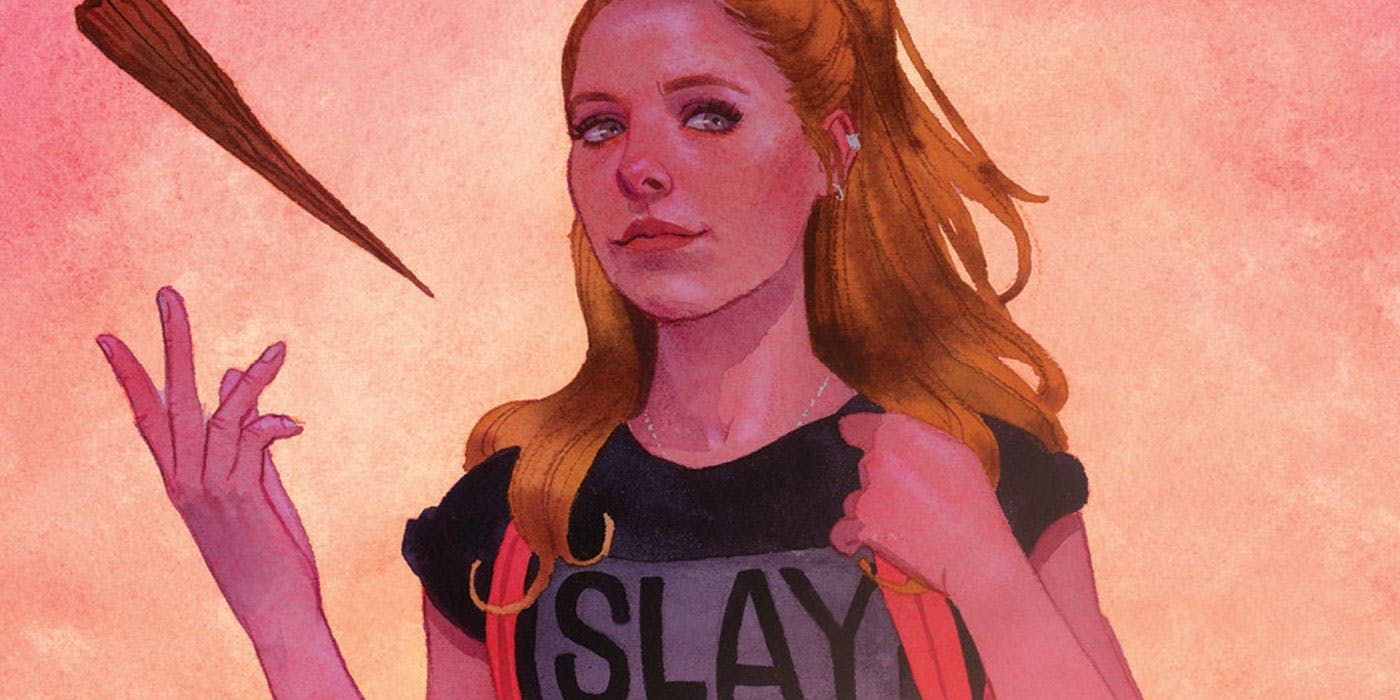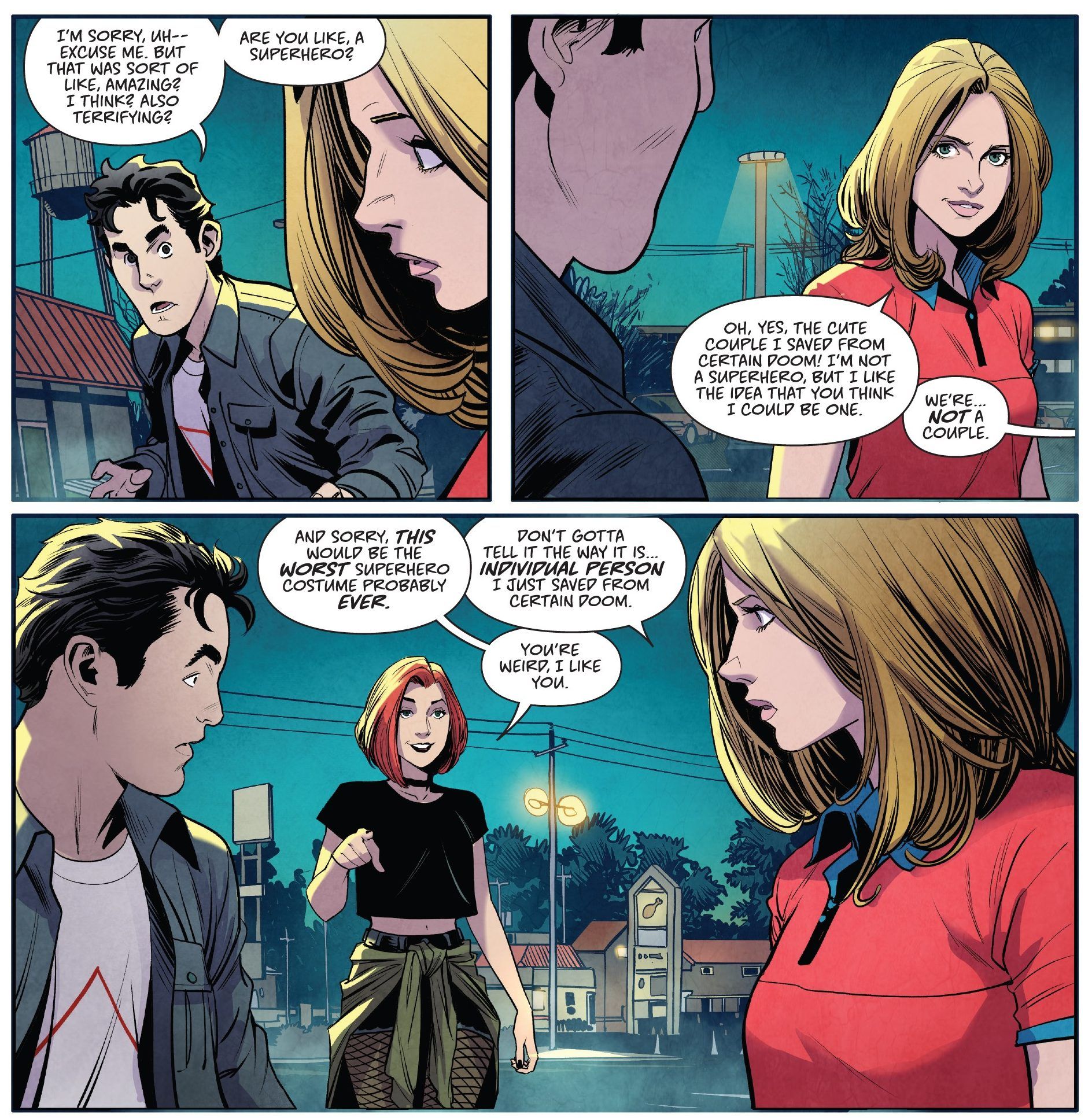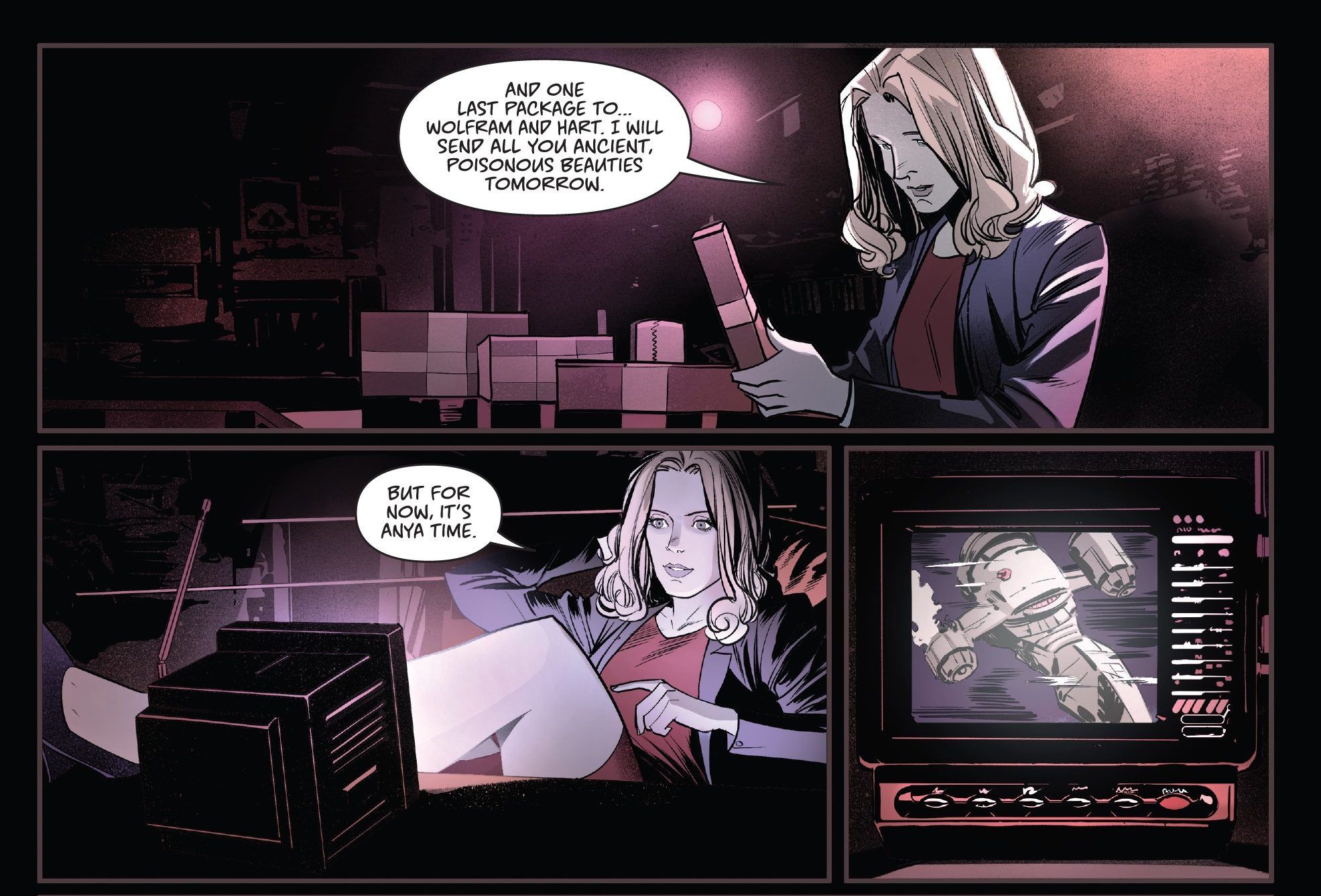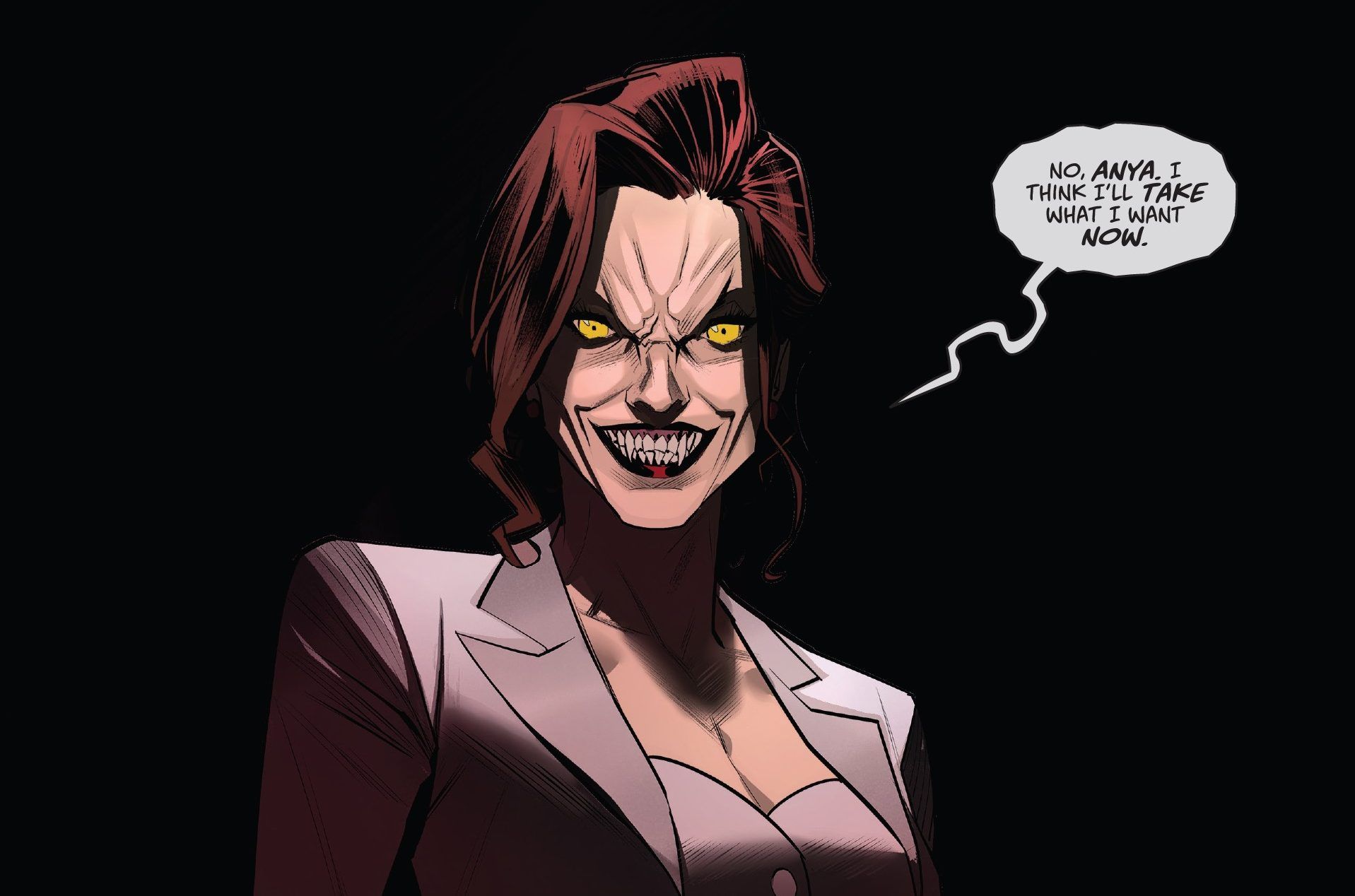WARNING: This article contains spoilers for Buffy the Vampire Slayer #1, on sale now.
Buffy the Vampire Slayer is no stranger to reboots; after all, the hit television series's 1996 launch was itself a quick reboot of the 1992 film of the same name. Now, BOOM! Studios is releasing another take on the slayer's story, set in the modern day and written by Jordie Bellaire with art and colors by Dan Mora and Matt Taylor, respectively.
Their story changes more than just the franchise's setting, however. While the first issue introduces us to many of the mainstays of the Buffyverse, a number of important changes to the previous saga have already been made. Here are all the major canon changes from the first issue of Buffy the Vampire Slayer.
RELATED: EXCLUSIVE: Buffy Comic Reboot Promises a 'Mind-Blowing' Hellmouth Revelation
The Scoobies
In the television series, Buffy (and the audience) were introduced to her future best friends Willow and Xander on the first day of their sophomore year of high school, just after Buffy arrived in Sunnydale. In the new version of the story, however, Buffy ends up saving them from a vampire attack outside of the fast food restaurant she's working at. While it might be a reference to a plotline from the sixth season where Buffy had to work at a burger joint, it also shows that Buffy has been in Sunnydale long enough to actually get a job, later confirmed to be three weeks, but she also seems already disconnected from the regular teenage world around her. She's embraced vampire hunting, a decision that the television Buffy had to reluctantly be forced into during the first season of the show. Here, Buffy is more resigned than the television incarnation of the character, but inherently more quick on the magical uptake.
Willow and Xander are still similar to their original counterparts, but not completely identical. Xander is much more overtly goofy and has papers to have no massive immediate crush on Buffy. Meanwhile, Willow is more laid back than her original form, dressing in more relaxed clothing and not exhibiting the initial shyness of her TV counterpart. She even seems to be casually open about her sexuality, with Buffy at one point referencing Willow being a witch lover and having a girlfriend.
RELATED: Buffy the Vampire Slayer #3 Cover Introduces a New Slayer From the Distant Past
Also missing is Jessie, the often forgotten fourth member of the group, who was killed in the two-part pilot and turned into a vampire. Jessie was the first vampire Xander killed, albeit accidentally, and it helped fuel much of his hatred and mistrust for characters like Angel and Spike. With Jessie not hanging over Xander, he might be more willing to help those two if/when they join the heroes.
Buffy and Giles also see a huge shift in their relationship. When Buffy first comes to the Sunnydale High library in the television series, librarian Rupert Giles surprised her by revealing that he knows she's the Slayer and that he is her Watcher. But in the comic reboot, Giles is established as already being her Watcher and mentor.
NEXT PAGE: How the Buffy the Vampire Slayer Reboot Revamps Any and Drusilla
What's The Deal With Anya?
When the television series introduced her, Anya was initially intended as a one-shot villain, a vengeance demon who could usher in a dark alternate reality for an episode before the world was reset to normal. In the end, though, she became a major supporting character who's arc saw her become reacquainted with humanity, enamored by capitalism and the modern world before falling in love with Xander.
The comic seems to be dropping at least part of that aspect of her character, while making her more enigmatic in the process. Anya isn't a teenager, but a grown woman. She's not attending Sunnydale High, but running a mysterious magical shop. It doesn't appear to be the Magic Box (which became the base of operations for the Scoobies in the fifth and sixth seasons of the show), but does allow Anya to work a similar job as the apparent head of the store. This is basically the Season 5 Anya, but with no apparent deeper connection to the rest of the (younger) cast. She still maintains a dismal view of men, suggesting that her past as a demon who targeted horrible members of the sex might still be her origin. It'll be interesting to see if this new Anya still completely has that past, and if so, how she apparently lost her powers.
RELATED: Buffy's Robin Wood Revamp is the Comic's Biggest Change Yet
Drusilla, aka The Mistress
Perhaps the biggest change to the canon comes with the introduction of the main villain of the story, Drusilla. In the original series, Dru and Buffy were relatively disconnected. The Master was the driving villain of the first season of the television series, a straight forward Big Bad for Buffy to fight against. He had sired many vampires across his long life, including Darla, the vampire that turned the man who would become Angel, who during his dark days as Angelus drove Drusilla mad and turned her into a vampire.
This version of Drusilla doesn't seem to be as overtly insane as she was in the television show. She doesn't walk around in flowing dresses, either, instead preferring a more modern suit. She isn't relying on Spike, constantly; in fact, he hasn't even appeared yet. Solicitations suggest that the fan-favorite vampire will be more a pet for Drusilla in this version of the story, and that she has chosen the name Mistress, indicating she's replaced the Master in this new mythos. It'll be interesting to see the more ambitious (and interesting) Drusilla step up in the Big Bad game, and what kind of impact that will have on the story going forward.




